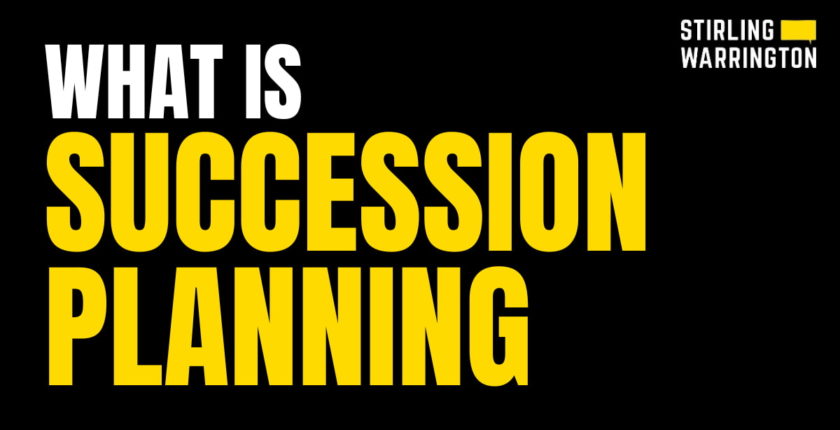What Is Succession Planning?
Succession planning is a tool businesses can use to close the engineering skills gap.
When should businesses start Succession Planning?
Before you need it. That’s the golden rule.
Ideally, succession planning should begin as early as possible. Whether that’s at the launch of your business or the minute someone is hired.
Once your strategy is in place, it shouldn’t gather dust. Succession planning isn’t a one-off task, it should be reviewed and updated annually, or whenever key changes happen in your business.
A good plan will shift how you view your team. You’ll start spotting future managers and leaders early. And by investing in their development now, you’ll avoid panic later.
If you’re seeing valuable knowledge walk out the door (especially with retiring engineers) it’s time to act. Use our guide to start building a succession plan that closes your skills gap and secures your future.
What is Succession Planning?
Succession planning is the process of identifying key skillsets within your team and creating action plans to retain them within the business. In engineering, these skills are often held by senior team members with years of hands-on experience and theoretical knowledge.
The goal? To make sure that knowledge is passed on—not lost.
According to the Engineering Construction Industry Training Board, by 2026, more than 91,000 engineers are expected to retire. That’s nearly 20% of the workforce.
Every day, I speak to teams who are feeling the pressure. Retirements are leaving skills gaps, and the remaining engineers are stretched thin.
Succession planning helps break this cycle. By actively transferring knowledge before someone leaves, you ease the handover, strengthen your team, and protect your business for the future.
Watch the video below for my quick summary of succession planning from an engineering perspective.
What is the Succession Planning Process?
The process looks like this:
- Identify which areas are key to the teams’ operational effectiveness
- Pick out your teams’ skillsets and knowledge where gaps occur
- Note which engineers are ready to advance and which are lacking in skills/knowledge
- Come up with a plan of action. How are you going to implement a succession plan?
- Incorporate training and development that will close the skills gap (use engineers who are ready to advance – make the most of the tools you have to hand)
- Keep updating your strategy. Look at the success of your plan and update it where it needs repairing to keep your skills gap non-existent.
In the video below, I explain when to start the succession planning process and how you can start it.
Why is succession planning important?
You can’t prevent people from leaving, in some cases. However, you can prevent skills leaving your business. How?
Imagine a funnel. This funnel helps direct all the skills, experience and knowledge through the business. You need engineers’ skillsets to move down this funnel in order to excel in their role.
The drivers of this movement are your team and training opportunities. If you lose a member, you then create a hole in this funnel.
These holes mean that skillsets are lost, and engineers take longer to move through. Ideally, your whole team will have their skillsets at the end of the funnel.
Succession planning is analysing this funnel and preventing holes from appearing.
Longevity of the business
Succession planning strengthens the overall capability of your organisation which will help the longevity of the business.
By identifying the efficiencies you have, you can take measures that’ll stop you losing them.
Avoid a Crisis
By finding the culprit and pinpointing where you can close the skills gap sooner rather than later. It will give your employees time to gain skills to fill that gap and replace a position that has opened.
Training and Development
Doing this will also create a structure for training and development.
If you lay out clear progression routes from the outset, your team will know they have a chance of gaining a leadership role in the future.
Maintain Trust with Stakeholders/Shareholders.
You can maintain AND improve trust with stakeholders and shareholders.
It reflects well on the organisation if you have a clearly defined succession plan demonstrating that you’re proactively managing staff and planning for the future.
Lower the Impact of Leadership Change
Succession planning will also lower the impact of leadership change.
If you know an engineer is retiring, you can prepare other team members to potentially step in to fill the position. Consider creating a mentorship programme for engineers looking to up-skill or new team members. By shadowing the soon-to-be-retired manager, they’ll learn the ins and outs of the role. It’ll also help to gradually implement this new leader/senior figure into the team.
Shadowing programmes are particularly useful for new hires. It allows the team to get to know (and build a rapport with) the new leader before they take over.
But it’s also beneficial to promote internally!
In Summary
Succession planning is a vital tool for any organisation. Without it, essential skills risk being lost as experienced team members retire (especially in engineering).
The key is to act early and plan ahead.
As a specialist engineering recruitment agency, we support businesses in bridging the gaps identified in their succession plans. Whether you’re hiring multi-skilled, electrical, or mechanical engineers, we can help at every level.
Plus, having a strong succession strategy strengthens your employer brand. It shows future engineers there’s a clear path for development and progression. Something today’s candidates value highly!
If you need help shaping your succession plan or communicating it through effective recruitment marketing, our RPO model can support you.

